How to insulate a vaulted ceiling in 5 steps
While vaulted ceilings are becoming all the rage, not many people know how to insulate them correctly. What with energy prices rising, figuring out how to stop hot air from escaping is a must. Essentially, the better your property is at retaining heat, the better your bills will be, and the longer your home will last. Here are some tips on how to insulate a vaulted ceiling. Alternatively, hire the local tradesperson your neighbours recommend. Take a peek at our vaulted ceiling cost guide to discover how much a project such as this will set you back.
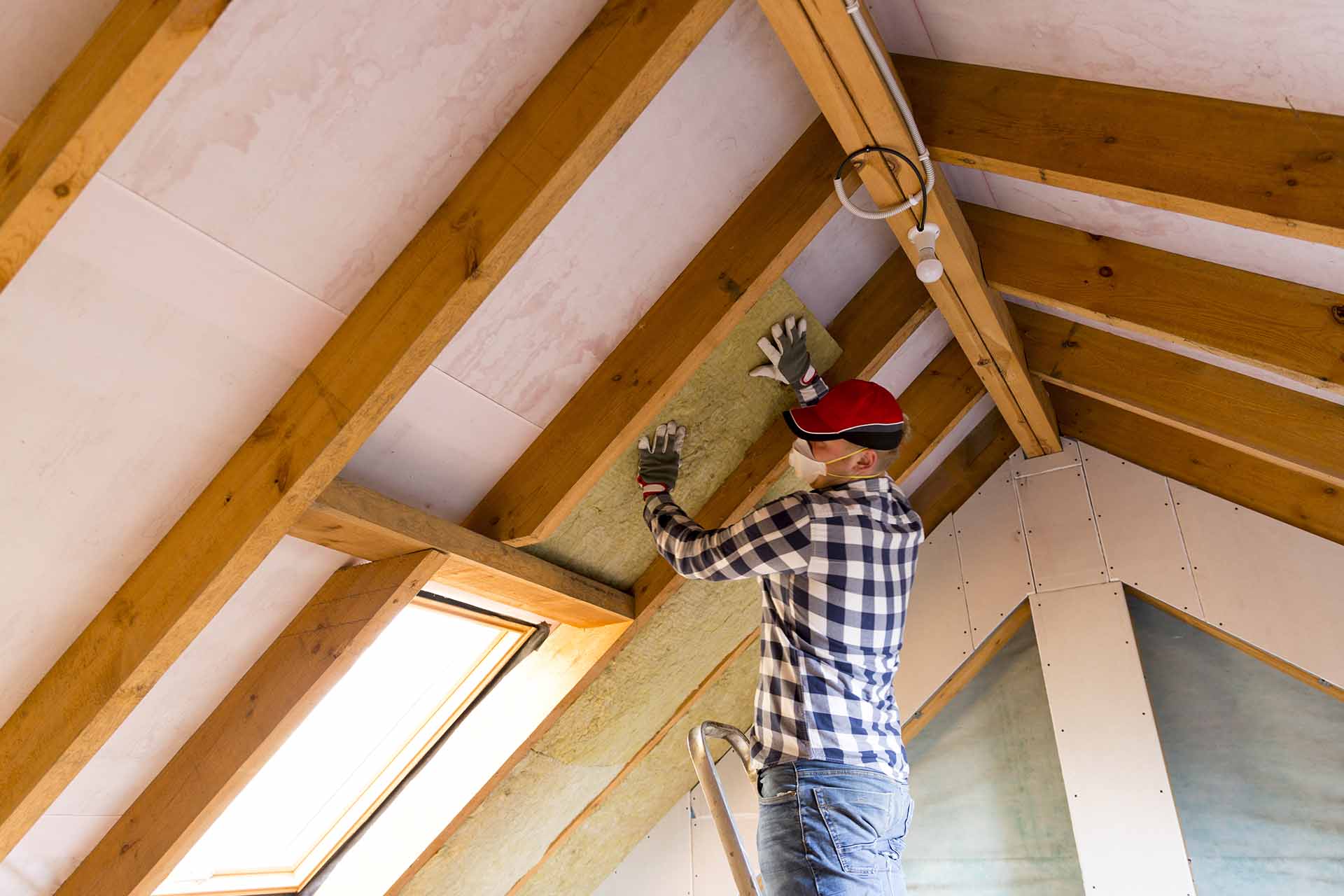
Rather than sloped roofing, square corners, or flat ceilings, modern-day property design is seeing an increase in homeowners opting for more detailed structures. There’s a growing number of vaulted ceilings being used in contemporary residential plans and renovations. With the inclusion of this feature, homeowners benefit from additional natural light plus a feeling of space from the increased room volume.
But while vaulted ceilings are becoming all the rage, not many people know how to insulate them correctly. What with energy prices rising, figuring out how to stop hot air from escaping is a must. Essentially, the better your property is at retaining heat, the better your bills will be, and the longer your home will last.
Here are some tips on how to insulate a vaulted ceiling. Alternatively, hire the local tradesperson your neighbours recommend. Please take a peek at our vaulted ceiling cost guide to discover how much a project such as this will set you back.
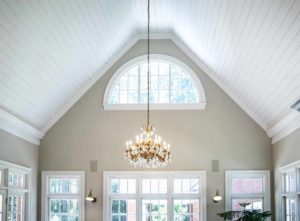 Vaulted ceiling insulation: Important considerations
Vaulted ceiling insulation: Important considerations
Your ceiling insulation specialist will typically use tape and caulk to reduce the amount of air that passes via the ceiling, thus, preventing permanent harm.
Traditionally, insulation involved installing blankets or fibreglass batts between the loft’s parallel rafters so that more air could flow underneath the slanted roof.
Batt insulation cuts down airflow from underneath your property, and the substantial loft air space enables plenty of ventilation to prevent any damp.
Top tip: Because more heat loss occurs in the loft, make sure your insulation batts are narrower in the walls and denser in the loft—the thicker the loft insulation, the more insulation power.
How to insulate a vaulted ceiling: think about your options
Wadding vaulted ceilings carry slightly more risk than providing more insulation to level types of ceilings. The tighter gap between sloped ceilings and sloped roofs means the void does not house denser batts, as well as a traditional loft, can do.
However, to rectify this issue, you can use more expensive, narrower batts with an enhanced insulating factor specially crafted for vaulted ceilings like blown cellulose. Alternatively, you could go for the more contemporary spray foam material, designed for difficult-to-reach areas.
Because fibreglass batts have such a long history and aren’t expensive to buy, they’re more beneficial.
That said, if you’re seeking a long-term insulation type, consider looking elsewhere – over the years, fibreglass insulation can be much less efficient, as fibres become loose and, as a result, affect its overall effectiveness.
Cellulose
Because this material is thicker than batts, it’s a little more efficient at insulation, and once blown in an adequately compacted amount, it’s better at restricting airflow around it.
If your ceiling specialist chooses cellulose to insulate your vaulted ceiling, they’ll need to ensure the packing resists settling. This is because cellulose innately wants to inflate to its natural thickness.
Given that air can still pass through it, several building requirements request that there is ventilation between the roof and insulation. In this case, or wherever it’s been imperfectly fitted, cellulose’s capacity to stop air from leaking doesn’t beat that of fibreglass.
Batt insulation
A lot of vaulted ceilings necessitate costlier, bespoke batts for optimum insulation. Nonetheless, batts still let quite a lot of air around and through them if they’ve moved, settled over time, or haven’t been installed perfectly.
More elaborately designed roofs are trickier to insulate, as they have more elements for air to leak through. Fixtures and electrical wiring that run from the roof peak to the wall offer additional complications when using batts to insulate vaulted ceilings.
Spray foam material
This material comprises several composites, which are merged, and put on using water pressure via an applicator stick at a specialist workplace.
Once spray foam is applied to the ceiling, floor, or wall, it inflates to roughly three inches of thickness than its natural density, completely closing the gap.
What’s more, this product provides enhanced insulation compared to cellulose or fibreglass. Boasting excellent damp proofing and sealant qualities, you’ll probably save quite a lot of money on your electricity bills.
A ceiling expert will inject the product into the ceilings or walls of current buildings or apply spray foam during construction. To have spray foam installed, choose an experienced tradesperson to make sure the project is completed correctly.
Please find the best local ceiling insulation specialists near you with our quick and easy online search.
The best way to insulate vaulted ceilings
If your loft has plenty of space, the most straightforward way to insulate vaulted ceilings is using batts over the rafters. Typically, your local loft insulation expert will leave a two-inch gap between the roof sheathing and insulation allowing for efficient ventilation.
Step 1: Measure it right
Use a measuring tape to work out the distance between the rafters. Next, multiply how many spaces need to be filled by the length of the rafters – this will determine how much insulation you’ll need.
Top tip: When you buy insulation that needs installing between the rafters, check the R-value against the rates suggested by the government.
Step 2: Fit the insulation into position
Unroll the insulation and measure the first section. For especially lengthy distances, cut two sections so they comfortably fit together. This makes the fitting process easier.
Carefully press the section(s) into place, but don’t shove them in. If insulation is compacted, this reduces its R-value.
Step 3: Place the pieces between the rafters
Position the cut section between the rafters using the vapour retarder (foil) side down, except if building regulations state otherwise. Staple the rims of the insulation to the base of the rafters, making sure the insulation pulls snugly.
Step 4: Insulate around light fixtures
Cut the insulation around electrical outlets and light switches and use the leftover insulation to push into the spaces.
Top tip: A lot of cathedral ceilings need insulation around recessed light fixtures like pot lights. Working with insulation around light fixtures is dangerous, with fire risk, so it’s vital to do your research and follow the necessary safety measures. Also, check the fire and building regulations on this topic in your local area.
Step 5: Secure any gaps in the insulation
Use specially designed wire supports to secure gapping of the insulation, so they fasten vertically to the rafters.
Since you’re working with fibreglass, you’ll need to wear the appropriate safety gear like trousers and long sleeves, safety goggles, gloves, and a nose and mouth mask.
Top tip: Whenever you’re fitting vaulted ceiling insulation, wear a helmet to prevent any injuries on exposed nails, ceiling joists, and other dangers.
FAQs
How to insulate a vaulted ceiling with exposed beams?
You can either use foam spray insulation or foaming sheet insulation to insulate a vaulted ceiling with exposed beams.
If you don’t want to deal with the hassle of insulating a vaulted ceiling with exposed beams yourself, hire a professional local insulation specialist to do it for you. Use our effortless online search to locate the best tradespeople in your area. Or use our get a quote feature and leave it to us to get multiple quotes for the work from local insulation experts who come recommended by your neighbours.
How do I insulate a vaulted ceiling?
Use the following methods mentioned above, including:
- Batts
- Cellulose
- Spray foam
Why should I insulate a vaulted ceiling?
Whether your ceiling’s finished with planks, plasterboard, or another covering type, it’s tricky to eradicate all routes for air that you’ve paid to heat from escaping into the area between the roof and ceiling.
Lights, electrical boxes, and the joints between ceiling finish pieces have cracks through which air travels. Once warm air rises and hits the colder roof, it cools swiftly, and water vapour condenses. If you don’t address this issue, it’ll lead to long-term damp problems like mould.
Heat loss, as well as rot and mould caused by damp, must be prevented – these can rapidly affect the physical reliability of your property and lead to a problem that’s unquestionably hard to rectify.

We check the reviews on Checkatrade are from real people, and that trades meet our high standards.
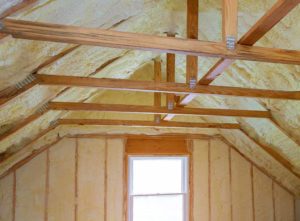
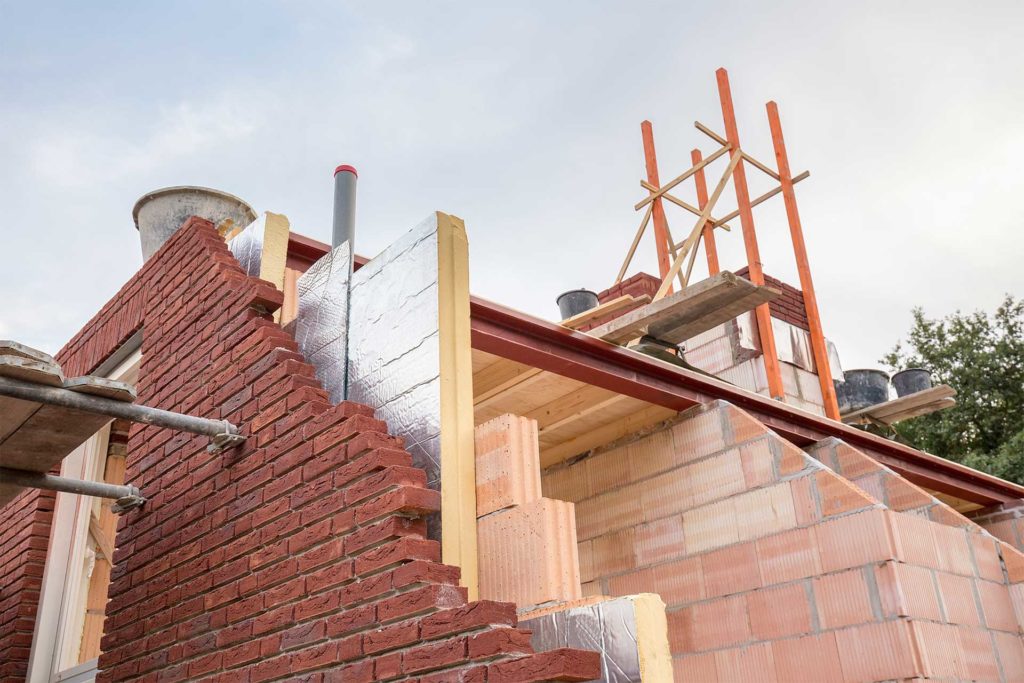
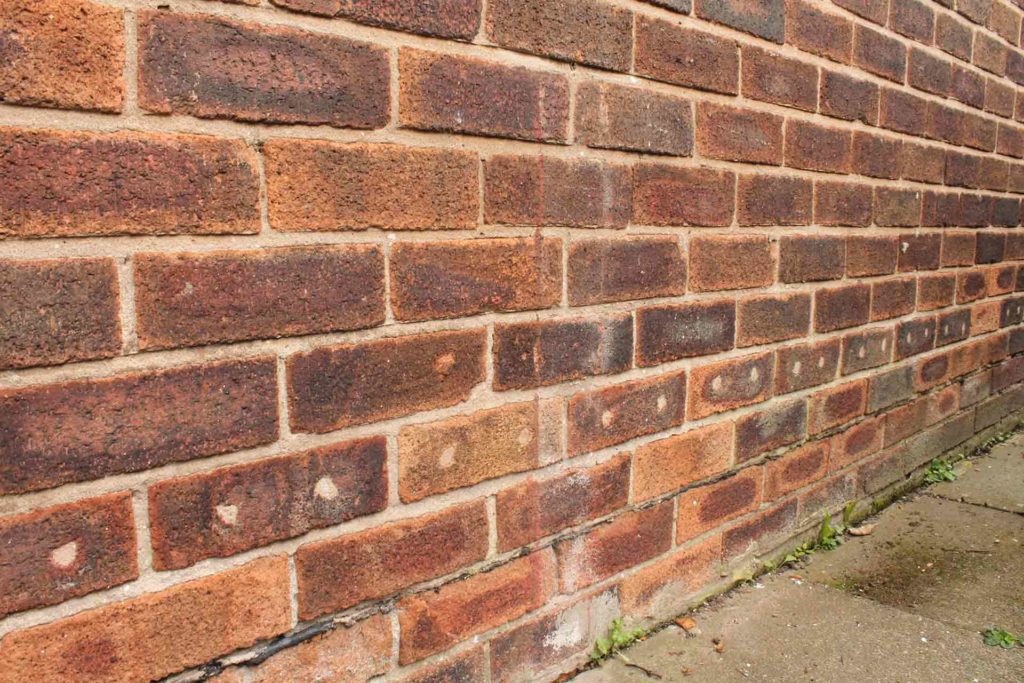
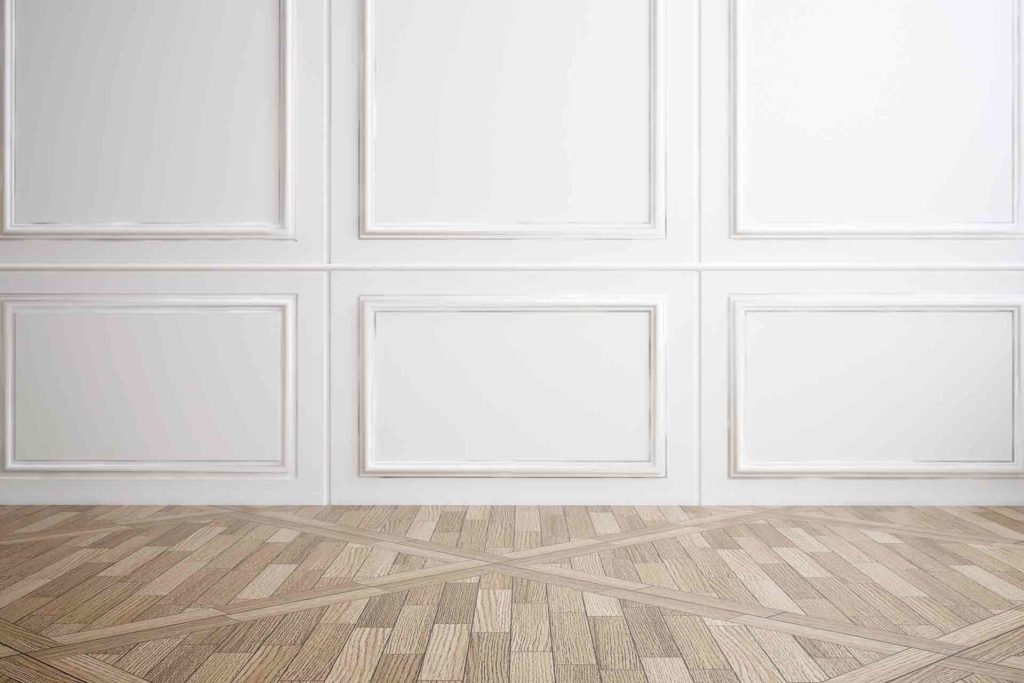
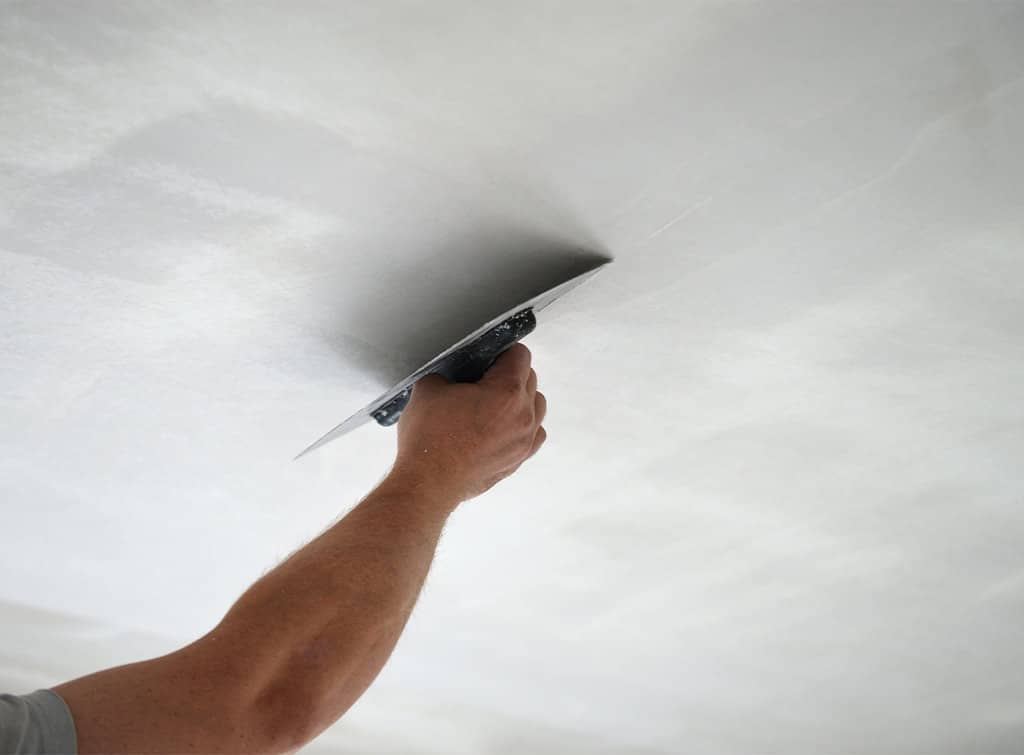
Clay Van Horn
Great article on properly insulating a cathedral ceiling.